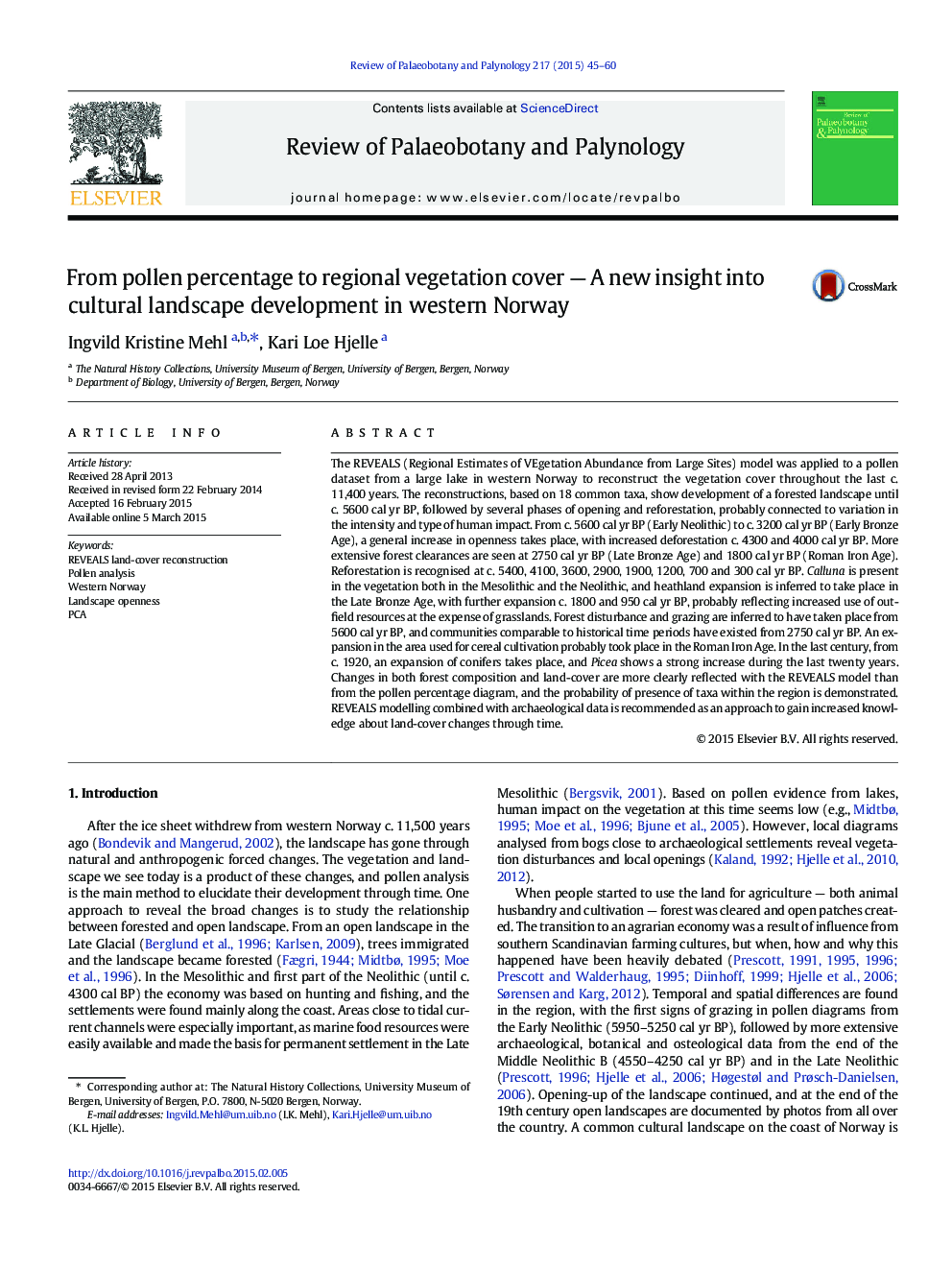| کد مقاله | کد نشریه | سال انتشار | مقاله انگلیسی | نسخه تمام متن |
|---|---|---|---|---|
| 4750215 | 1642481 | 2015 | 16 صفحه PDF | دانلود رایگان |
• A pollen diagram covering 11,400 years is obtained from a large lake (340 ha).
• Regional vegetation reconstructions using REVEALS detect changes in forest cover.
• A gradual and step-wise opening of the forest started c. 5600 cal yr BP.
• Periods of forest opening alternate with reforestation, reflecting changes in human activity.
• Small-scale fluctuations in tree cover are highlighted in REVEALS.
The REVEALS (Regional Estimates of VEgetation Abundance from Large Sites) model was applied to a pollen dataset from a large lake in western Norway to reconstruct the vegetation cover throughout the last c. 11,400 years. The reconstructions, based on 18 common taxa, show development of a forested landscape until c. 5600 cal yr BP, followed by several phases of opening and reforestation, probably connected to variation in the intensity and type of human impact. From c. 5600 cal yr BP (Early Neolithic) to c. 3200 cal yr BP (Early Bronze Age), a general increase in openness takes place, with increased deforestation c. 4300 and 4000 cal yr BP. More extensive forest clearances are seen at 2750 cal yr BP (Late Bronze Age) and 1800 cal yr BP (Roman Iron Age). Reforestation is recognised at c. 5400, 4100, 3600, 2900, 1900, 1200, 700 and 300 cal yr BP. Calluna is present in the vegetation both in the Mesolithic and the Neolithic, and heathland expansion is inferred to take place in the Late Bronze Age, with further expansion c. 1800 and 950 cal yr BP, probably reflecting increased use of outfield resources at the expense of grasslands. Forest disturbance and grazing are inferred to have taken place from 5600 cal yr BP, and communities comparable to historical time periods have existed from 2750 cal yr BP. An expansion in the area used for cereal cultivation probably took place in the Roman Iron Age. In the last century, from c. 1920, an expansion of conifers takes place, and Picea shows a strong increase during the last twenty years. Changes in both forest composition and land-cover are more clearly reflected with the REVEALS model than from the pollen percentage diagram, and the probability of presence of taxa within the region is demonstrated. REVEALS modelling combined with archaeological data is recommended as an approach to gain increased knowledge about land-cover changes through time.
Journal: Review of Palaeobotany and Palynology - Volume 217, June 2015, Pages 45–60
